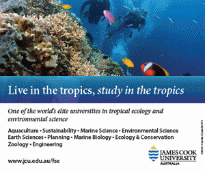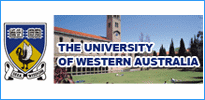Oceania: Oceania Education Profile
2012/08/15
Oceania Education Profile
In respect to wealth, Australia and New Zealand have relatively strong economies, and both provide aid to the rest of the region. Most of the islands of the South Pacific are not blessed with an abundance of readily tradeable natural resources and find it a challenge to cope economically in a global environment.
These variations in wealth translate into huge differences in educational opportunities, literacy levels, and health status. Literacy rates in New Zealand and Australia are virtually 99% by UNESCO criteria, compared with about 30% in Melanesian countries of the west.
While New Zealand and Australian students enjoy full participation at primary and secondary levels and between 20 to 30% of people aged 20 to 29 years attend a tertiary institution, the figures for PNG and Solomon Islands, for instance, are less than 50% at primary level, 20% at secondary, and only 1 to 2% at tertiary level. Few of the islands can afford a national system of education for all, and most governments have subsidized the establishment of schools set up by religious and private institutions, often with assistance from teachers from New Zealand, Australia, and England or France. Most countries still have selective systems of education, with secondary and tertiary places limited to a few of the academically more successful students.
Variations in the quality of education throughout the region are reflected in such statistics as the number of suitably trained teachers, access to school and class libraries, computers, and science laboratories, to name a few. Classes in the poorer countries are often large and the teaching is authoritarian, with minimal participation by the students or group work. Curricula and examination systems frequently still reflect the colonial models introduced by English, French, and religious authorities from Western cultures, although numerous attempts have been made to introduce locally relevant themes and resources into the schools of many countries in recent years. Some examples are the United Nations Development Programme Curriculum Project of the late 1960s, the South Pacific Literacy Education Course (SPLEC) of the early 1990s, the Pacific Science Series designed to help improve the quality of primary science teaching, funded by New Zealand and UNESCO Apia Office , special readers developed for Aboriginal and Torres Strait Island children in North Queensland in the early 1990s by the Regional Office of the (now) Education Queensland.
By contrast, children in New Zealand and Australia typically attend well-funded state or private schools, with suitably-trained, well-educated teachers, and have access to good quality libraries and computers and locally developed curricula and resources. Teaching styles are student-oriented, interest-based, and student participation is widely encouraged. Most children learn to read using book-based (or “whole language”) methods, with locally published “real” books. Curricula are frequently revised to keep pace with new research developments. International surveys of achievement consistently show high levels of student performance and students from many countries pay substantial fees to gain their education in these two countries. There is, of course, always room for improvement, but the differences in the outcomes of education between the two larger, metropolitan nations and the small island states have given rise to a regular flow of aid to provide support and innovation, including in the area of literacy.
- Oceania News
-
- WORLD: Tuition fees row: education expert warns over graduate earnings
- WORLD: UN report attacks austerity budgets for growing inequality
- FRANCE: Aluminium-Lithium Alloys Fight Back
- AUSTRALIA: Pacifica Bauxite Identifies Potential High-Grade Bauxite Outcroppings in Solomon Islands
- AUSTRALIA: Queensland Bauxite Gains State Approval of Mineral Development Work Program
- AFGHANISTAN: UNWTO: International tourism – strongest half-year results since 2010
- Trending Articles
-
- EUROPE: Ball Corporation Debuts Three New Aluminium Beverage Can Sizes
- SOUTH AFRICA: Nigeria and South Africa emerge from recession
- CHINA: Xi Jinping opens BRICS Summit in Xiamen, asks members to shelve differences
- NIGERIA: The Security and Exchange Commission approves the 40th Annual General Meeting of Oando PLC
- KENYA: Kenya awards major contract for construction of core infrastructure for smart city
- BAHRAIN: Aluminium Bahrain’s Line 6 Expansion Achieves 25 Percent Completion














